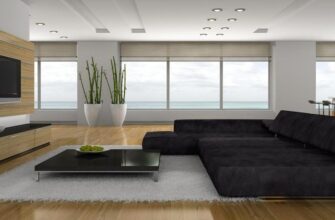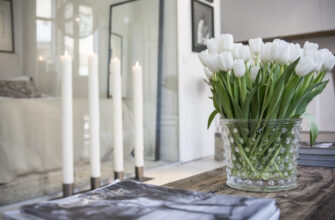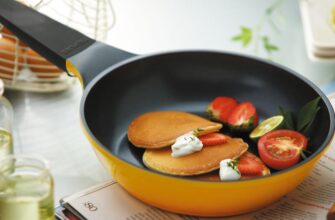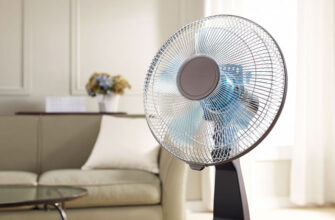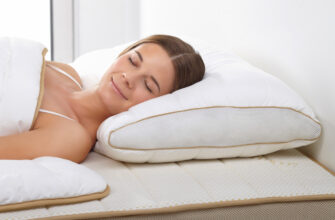The taste and degree of roasting of pancakes, omelettes, steaks and other dishes directly depend on the pan that is used during cooking. It is important that it is comfortable, durable and does not allow food to burn. You should also pay attention to the size and type of the frying pan, the material of the handle, the body and, of course, the manufacturer.

- The best manufacturers of pans – which company to choose
- Types of pans
- Universal frying pan
- Advantages
- disadvantages
- Pancake pan
- Advantages
- disadvantages
- Frying pan-wok
- Advantages
- disadvantages
- Grill pan
- Advantages
- disadvantages
- Brazier
- Advantages
- disadvantages
- Paella pan
- Advantages
- disadvantages
- Stewpan
- Advantages
- disadvantages
- Tazhin
- Advantages
- disadvantages
- The main criteria for choosing a frying pan
- What pan diameter to choose
- Body material
- Coating material. Choosing a non-stick frying pan
- Pens
- Which frying pan to choose
- How much does a frying pan cost
- Video on choosing a frying pan
The best manufacturers of pans – which company to choose
A good frying pan, made of quality metal, with a solid handle and thick walls, cannot be cheap. Often, unscrupulous manufacturers pass off their product for what it really is not. For example, a 'high quality non-stick aluminum pan' is made from the cheapest extruded aluminum that has a much shorter life than die cast aluminum cookware. And the Teflon coating may turn out to be paint and varnish. Of course, in such a frying pan, food will burn, and it deforms quickly.
Therefore, choose products from trusted brands and at reasonable prices. The best manufacturers of frying pans are:
-
Tefal;
-
Gipfel;
-
Rondell;
-
Fissler;
-
Ballarini;
-
Neva metal cookware;
-
Biol.
Most families in the Russian Federation and CIS countries choose the products of these companies. And it is not surprising, because it is safe, comfortable, has a long service life and meets quality standards.
Types of pans
Universal frying pan
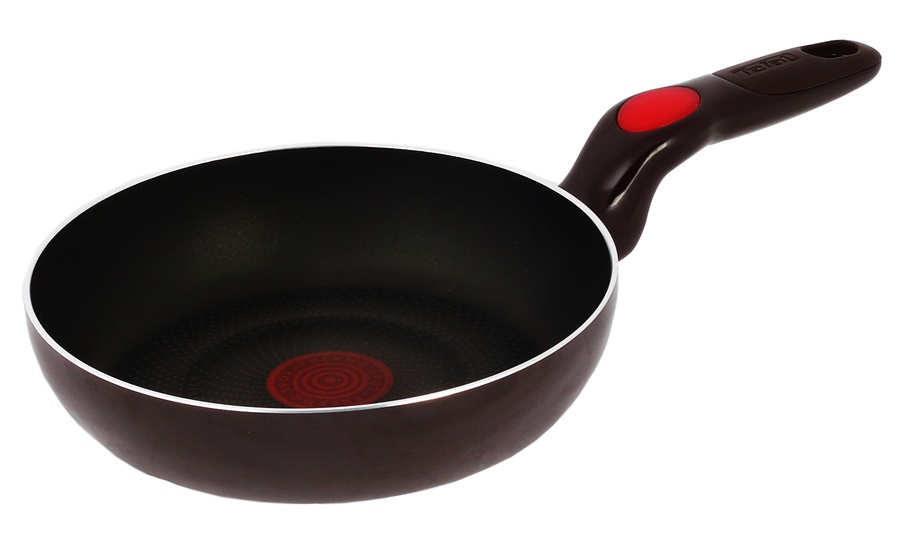
The universal or classic pan is used to cook large quantities of food. On it you can fry meat, stew vegetables or make pancakes. They are made from different materials (cast iron, aluminum, etc.), and can have different designs and sizes. As a rule, it has a rounded shape and one or two handles, often removable. In most cases, it can be washed in the dishwasher and used in the oven.
Advantages
-
A wide range of;
-
Durability;
-
Multifunctionality;
disadvantages
-
Since the pan is often used, it deteriorates faster than others.
-
Universal models are not very deep, which makes it difficult to prepare some dishes.
Pancake pan

Pancake pans have low sides (about 10 mm), a thick base to ensure even dough preparation, and a long handle.
The best pancake pans are those made of cast aluminum or cast iron. Aluminum models provide uniform frying of pancakes, and the most successful pancakes come out on a cast-iron frying pan (unless you use it for cooking other products). When buying steel cookware, it is important that it has a non-stick coating. Otherwise, the dough will turn into lumps.
Pancake pans may be sold with a removable handle. This makes it easier to wash. But if you are a master at making pancakes and know how to turn them in flight, it is better to opt for models with a non-removable handle.
Advantages
-
In such a frying pan, you can easily and quickly cook pancakes, as well as scrambled eggs, pancakes, cakes, etc.
-
Thanks to the flat and thick bottom, the dough is distributed and heated evenly.
-
The long handle minimizes the risk of burns.
disadvantages
- Limited functionality.
Frying pan-wok
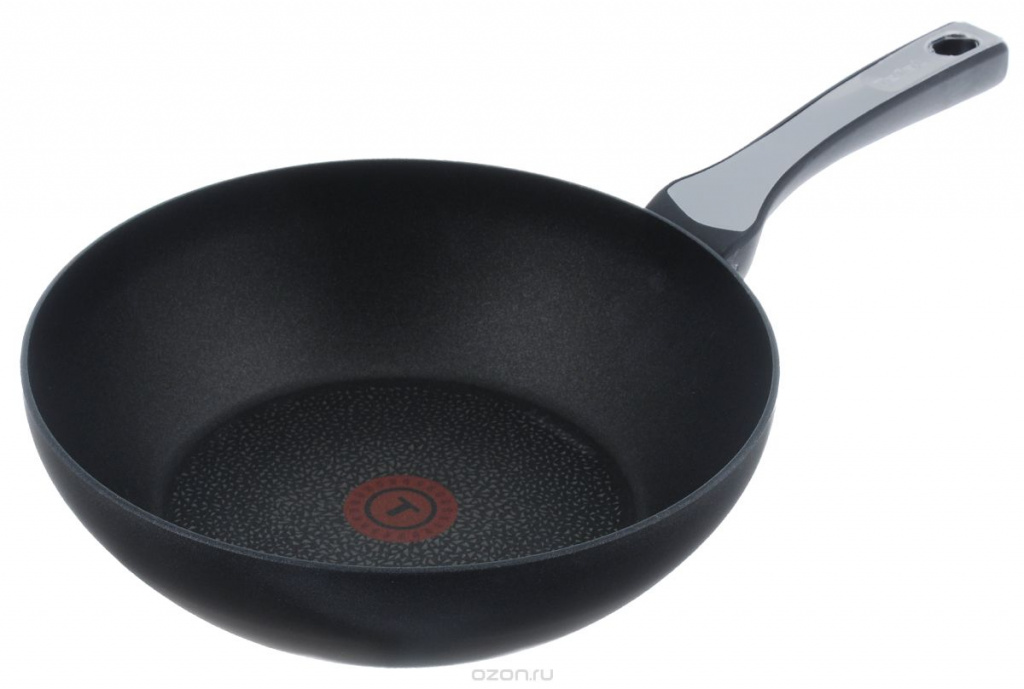
The main purpose of the frying pan is to quickly fry large quantities of ingredients while maximizing nutrient retention. The pan has a thin bottom and walls, due to which it warms up quickly. When cooking, it is important that the food is constantly in motion – you need to stir it all the time. In addition, you can boil food in the wok and cook food steamed or deep-fried.
The bottom of the product has a small diameter; it can have a classic convex or flat shape. If you have a convex (rounded) bottom, you may need a special adapter for the plate.
Advantages
-
Multifunctionality;
-
Food is quickly fried and crusty, which preserves many vitamins.
-
Less fat / oil required for cooking;
-
Holds a large number of products;
-
Fast food preparation;
disadvantages
-
Products need to be constantly stirred;
-
A special adapter for the stove may be needed;
Grill pan
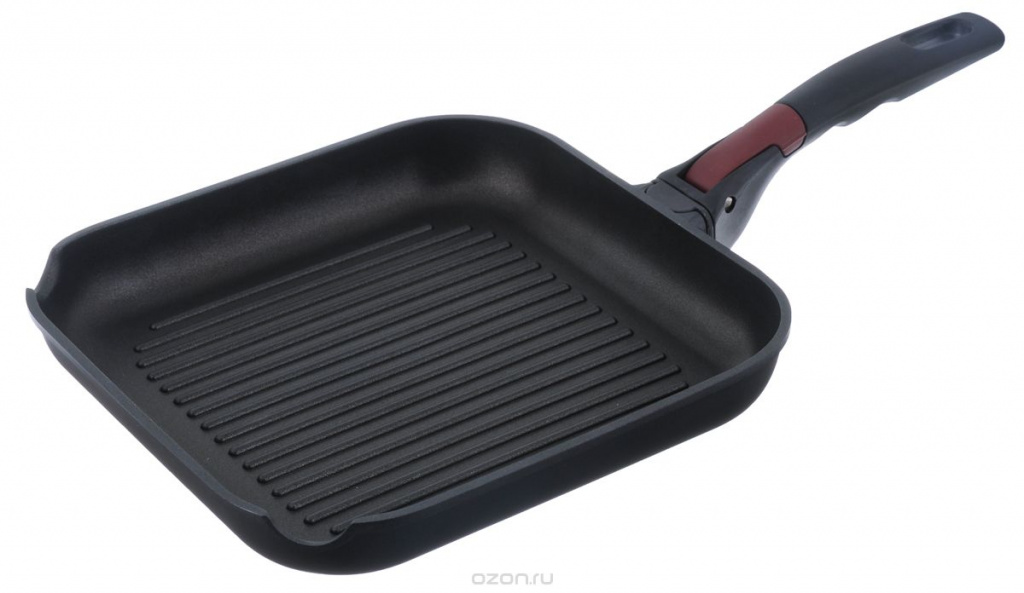
The grill pan is designed for frying fish, meat, vegetables and mushrooms. It has a ribbed surface. The food only touches the ribs, so it feels like the dish is being grilled. Fat drips between the ribs, which evaporates, penetrates into the dish and makes it juicier.
Advantages
-
For cooking, you need a small amount of oil;
-
Food does not stick to the pan.
-
The dish turns out to be low-fat, juicy and aromatic;
disadvantages
-
The pan is for frying only;
-
Most models are heavy.
Brazier

A frypot is a large-diameter, thick-bottomed frying pan with two small handles that allow you to place the dishes in the oven. You can fry, stew and bake food in it.
Advantages
-
Long service life;
-
The frying pan ensures uniform frying of products;
-
In a brazier, you can cook a dish for a large family;
-
Multifunctionality;
disadvantages
-
Takes up a lot of space in the kitchen;
-
Heavy.
Paella pan
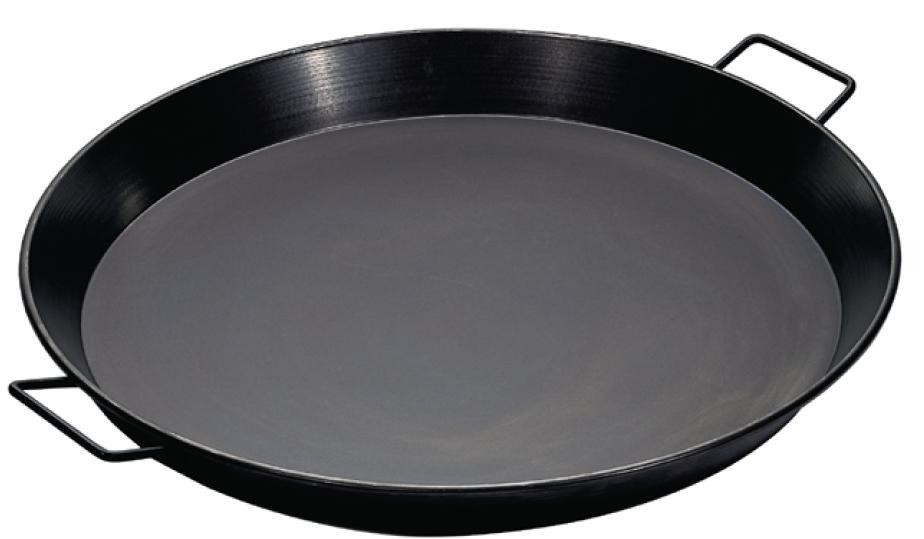
Paella is a traditional Spanish dish made up of spice rice, seafood, fish and other ingredients. To prepare it, you need a special frying pan, which ensures uniform heating of food and evaporation of the broth. Food in such a dish is juicy and aromatic, and rice is crumbly.
The paella pan is equipped with two small handles, it has a flat wide bottom and a shallow depth. Its size can be up to 50 cm in diameter, but some models reach one meter.
Advantages
-
Provides uniform heating of products;
-
Designed for a large number of servings;
-
Besides paella, you can cook meat, vegetables, fish, etc.
disadvantages
- Large in size;
Stewpan

A stewpan is a pan that can function as a saucepan. That is, in addition to frying and stewing food, you can cook sauce, soup, pilaf and even jam in it.
A stewpan is a deep container with a thickened bottom and walls. It can have one or two handles.
In this frying pan, food warms up well, does not burn and does not need to be constantly stirred.
Advantages
-
Uniform heating of food;
-
A wide variety of dishes can be prepared.
disadvantages
-
Large weight;
-
High price.
Tazhin
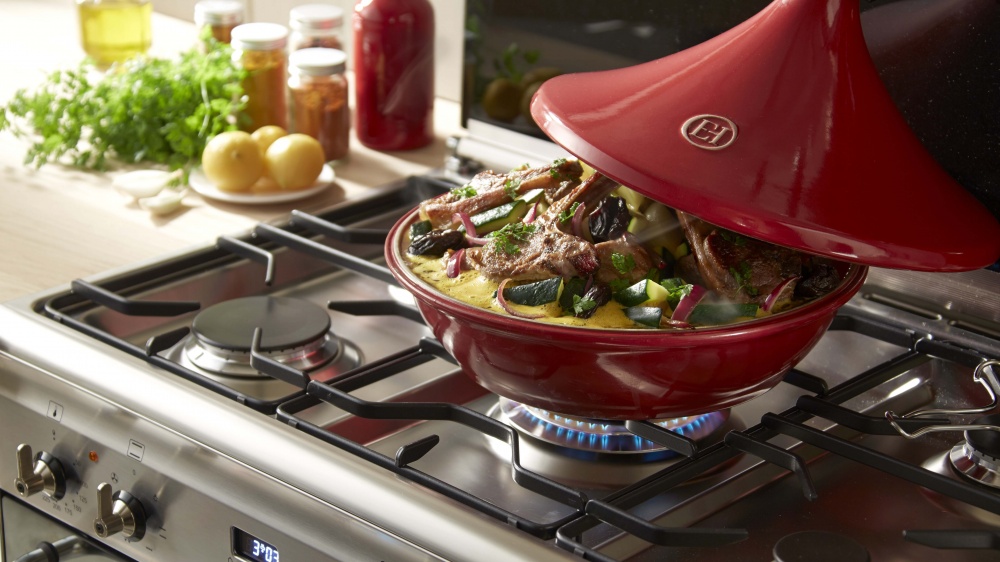
Tajine has a high cone-shaped lid, which prevents condensation formed during heating from getting on the ingredients. The liquid flows to the bottom of the pan and evaporates again. This makes the food soft and juicy.
Advantages
-
It is very convenient and easy to stew food in tagine;
-
The dish does not need to be stirred frequently, it does not burn, and it is never dry or hard.
disadvantages
- Not suitable for fried foods.
The main criteria for choosing a frying pan
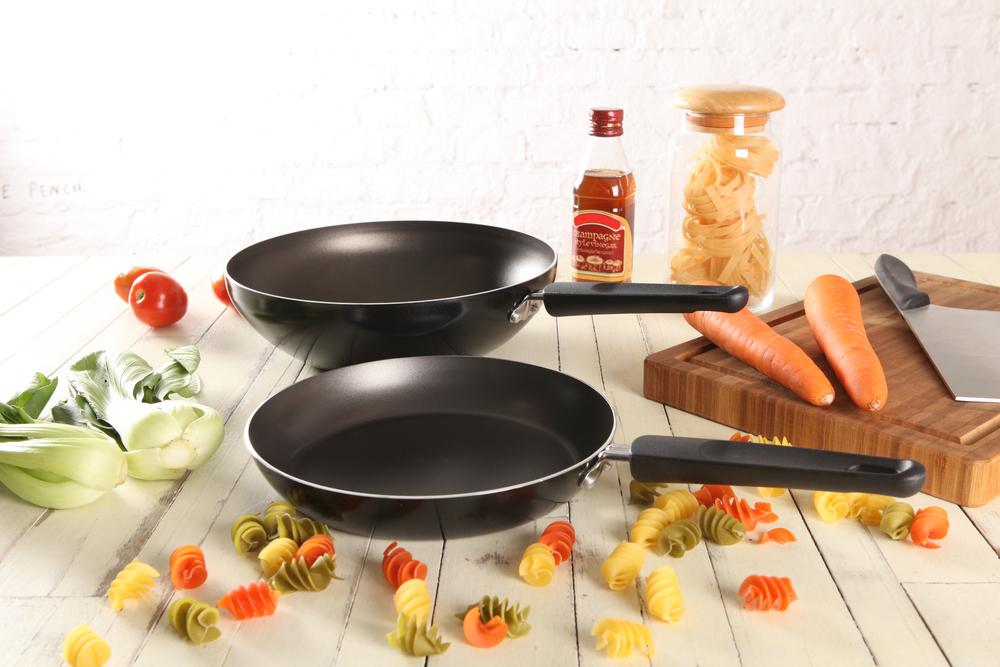
What pan diameter to choose
The size of the pan is selected according to the number of family members. For one person, a product with a diameter of 18–20 cm will be enough. About 22–24 cm is enough for a couple in love, and 26 cm is suitable for mom, dad and child. The more people you need to feed, the larger the pan you need.
In the case of electric and induction hobs, it is important that the bottom diameter does not differ much from the size of the hotplate.
Body material
The period of use, heating of food and care depends on the material from which the pan is made. The most commonly used products are cast iron, stainless steel, aluminum and copper.
-
Cast iron pans are the most durable and durable. They warm up slowly, but ensure that all ingredients cook evenly, keeping the desired temperature for a long time. Such products are suitable for cooking fried, stewed, boiled dishes. If the pan has a removable handle, it can be used for baking in the oven. The heating temperature of cast iron cookware is higher than that of aluminum cookware. Therefore, it is more suitable for frying and grilling. Cast iron pans must be protected from corrosion.
-
Aluminum frying pans are characterized by their lightness and high thermal conductivity. Food on them quickly warms up and chills quickly. Pans can be made from extruded, forged and cast aluminum:
-
The stamped material is the cheapest and most short-lived (service life – up to 2 years). Extruded aluminum frying pan can deform at high temperatures, and the non-stick coating can quickly deteriorate. The thicker the walls and bottom of such dishes are, the longer they will last.
-
Forged pans have similar properties to die-cast aluminum cookware, but are more durable. Often used for induction hobs.
-
Cast aluminum pans are more expensive, but much better. They are thicker, more massive and stronger than products made of stamped aluminum, and the non-stick coating will last much longer. Their service life is about 6-7 years.
-
Copper pans tend to have the highest price tag. They are durable and have high thermal conductivity. Copper pans heat up and cool down evenly and quickly, do not deform or rust.
-
The stainless steel frying pan does not corrode, it is easy to clean, it does not crack or deform. Such dishes retain their presentation for a long time, but if an empty frying pan is overheated, stains may appear on it. If the pan has a thin, single-layer bottom, it is more prone to warping, has a shorter lifespan, and is poorly suited for frying.
Coating material. Choosing a non-stick frying pan
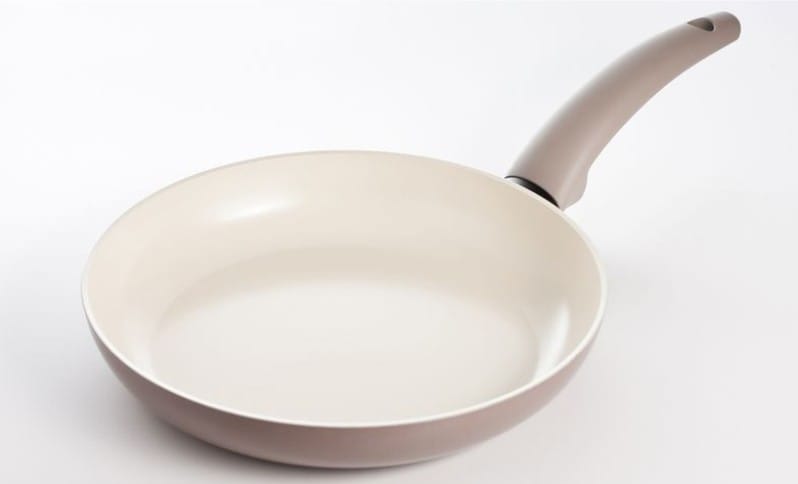
Using a non-stick frying pan can significantly save on oil or fat, or even eliminate it.
-
In production, Teflon or PTFE coating is most often used. It is quite stable, nothing happens to it even when exposed to alkali, acids and solvents. But pans with Teflon cannot be used at very high temperatures. The PTFE coating can withstand heating up to 200-250 degrees. When the specified temperature rises or the integrity of the surface is violated, Teflon begins to release toxic compounds. In addition, products in such pans should not be stirred with iron spatulas or other tools; they also need to be washed carefully, without using aggressive detergents.
-
Ceramic coating is more reliable and stronger than Teflon. It does not emit toxic compounds and does not deteriorate when exposed to iron objects and abrasive detergents. But ceramic pans do not like extreme temperature changes, which can cause the coating to crack. They are not dishwasher safe.
-
The enamel coating is quite fragile – it can crack on impact. Has the worst non-stick properties compared to all other types of coatings.
-
Titanium coating is the least capricious of all possible coatings. It is durable, not subject to deformation, chips and cracks, not afraid of impacts and scratches. But still, sharp knives should not be used during cooking. Titanium-coated pans cannot be used for induction hobs and are expensive.
-
The marble coating ensures uniform heating of food and does not allow them to cool down quickly. It is durable, but does not 'like' sudden temperature changes and stirring with metal objects: a knife, fork and spatula.
-
Excalibur coating is performed using the gas-plasma spraying technique. Pans with this coating are strong, durable and suitable for frequent use. They are not afraid of metal tools, but they are expensive.
Pens
Handles for pans can also be fixed. Non-removable handles are convenient for stirring food, tossing pancakes, etc. Removable handles allow you to use the pan in the oven and wash it in the dishwasher.
They can be made of wood, plastic and bakelite, so they do not conduct heat well. If you leave a wood handle over a fire, it will light up, and a plastic handle will start to melt. Bakelite will char over the burning burner.
Which frying pan to choose
When buying a frying pan, it is important not only to take into account the material and type of coating, but also the type of plate:
-
Most types of cookware are suitable for gas stoves.
-
It is undesirable to use heavy cast iron pans on a glass-ceramic surface – they can scratch the stove.
-
Almost all pans can be used on electric stoves with rapid burners, but it is not advisable to use products with a thick bottom.
-
Induction hobs require the purchase of special cookware, the bottom of which is magnetic.
As a rule, the manufacturer indicates for which types of stove the pan is suitable.
How much does a frying pan cost
-
Prices for classic cast iron pans vary from 350 to 14,000 rubles. Of course, from the product for 350-400 rubles. don't expect much. The more expensive the frying pan, the better, more convenient and durable it will be.
-
Grilled pans can cost 500-18,000 rubles.
-
The price of pans made of aluminum starts at 200 rubles. and can reach 24,000 rubles. The cost is determined by the quality of the aluminum. For example, a model made of cast aluminum can be purchased for 1,000–13,600 rubles, and an article made of stamped aluminum for 200–2,000 rubles.
-
Prices for stainless steel products can be either 200 rubles or 25,000.
-
Copper dishes are considered the most expensive; their cost can even be 65,000 rubles.
In the following articles, our experts tell you how to choose a pan for pancakes, with which coating to choose a pan – Teflon or ceramic, compare the material of pans – aluminum or cast iron, an analysis of the best manufacturers of pans.
Video on choosing a frying pan
Attention! This material is the subjective opinion of the authors of the project and is not a purchase guide.


